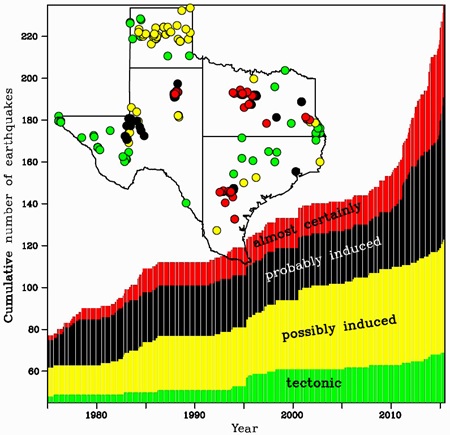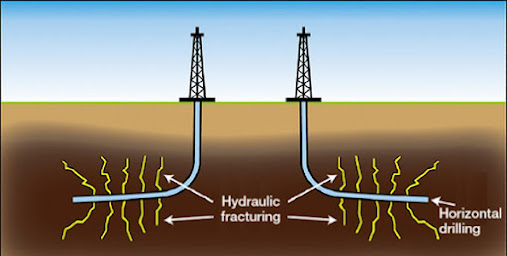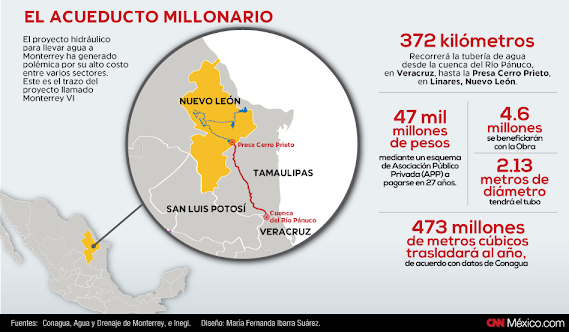The hydraulic fracturing (fracking) and the water from Mexico (Part 3: Earthquakes).

Figure 1 Figure 2 Figure 3 As a final part of my brief post, I will show few results that illustrate how fracking exhibits a significant correlation with the increase of the seismic activity in the surroundings. Given the fact that fracking is a common technique used in U.S. we have been able monitor fracking for a considerable amount of time. Then, we have been able to observe the secondary effects from fracking through the years. First of all, we focus on states such as Texas and Oklahoma where fracking has a strong activity, and various recent studies in recent years have pointed out that there seems to be a correlation between the seismic activity and the fracking technique. For example, there was a paper by scientists from the Southern Methodist University (SMU) in Texas where they determined that the number of earthquakes that were likely induced by human activity, have been increasing in recent years (Fig. 1). On the other hand, if we take a look at the data taken in Oklahoma

